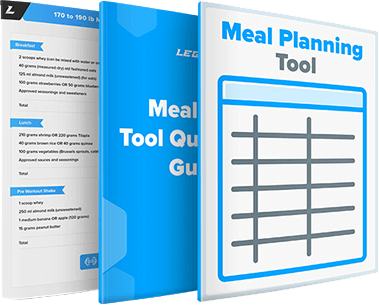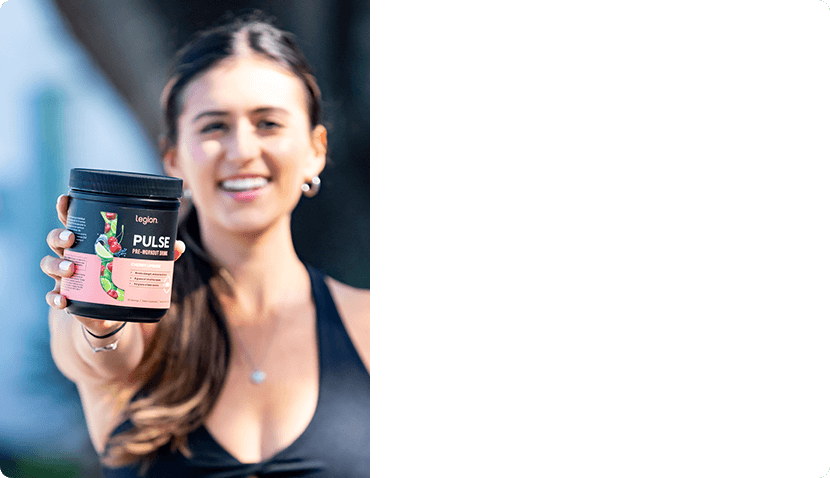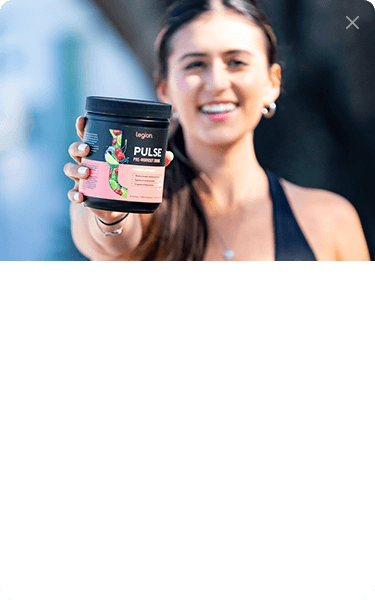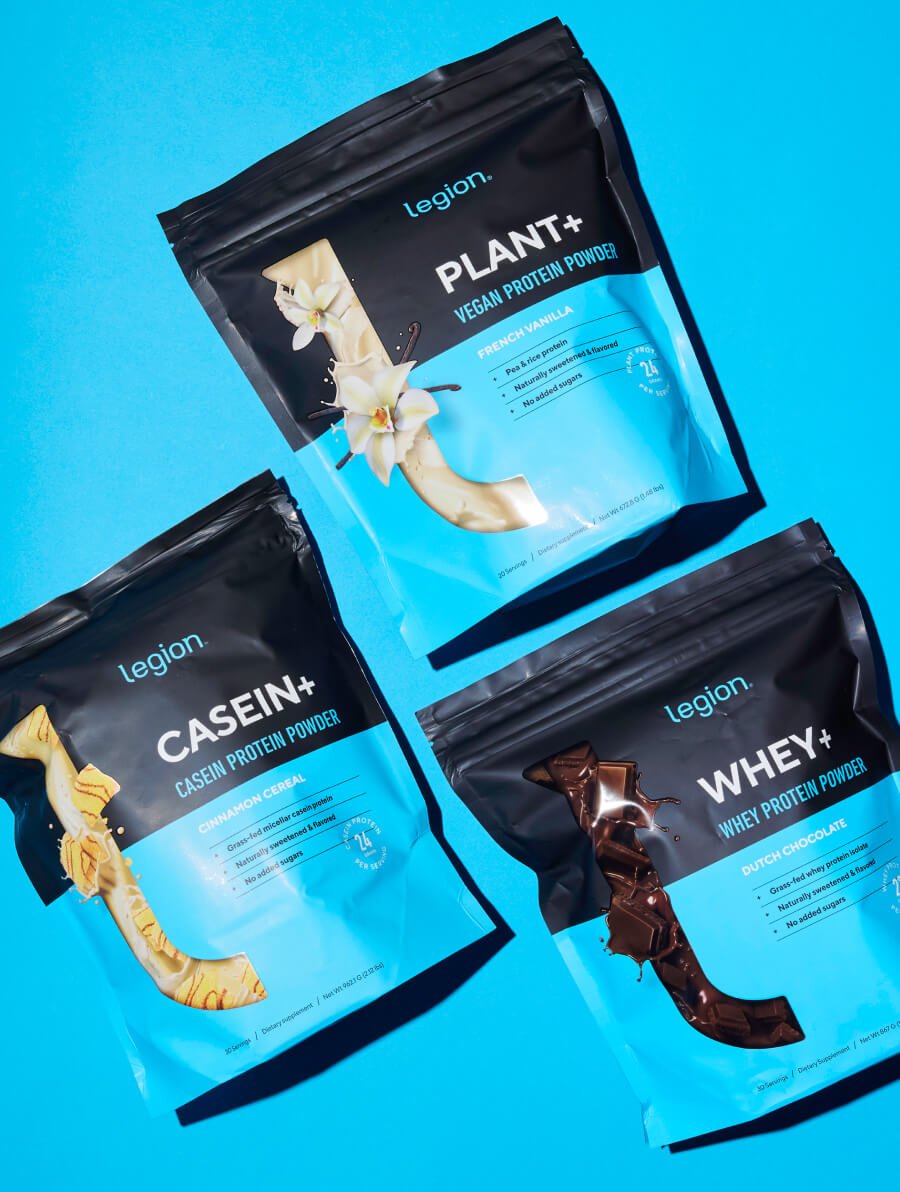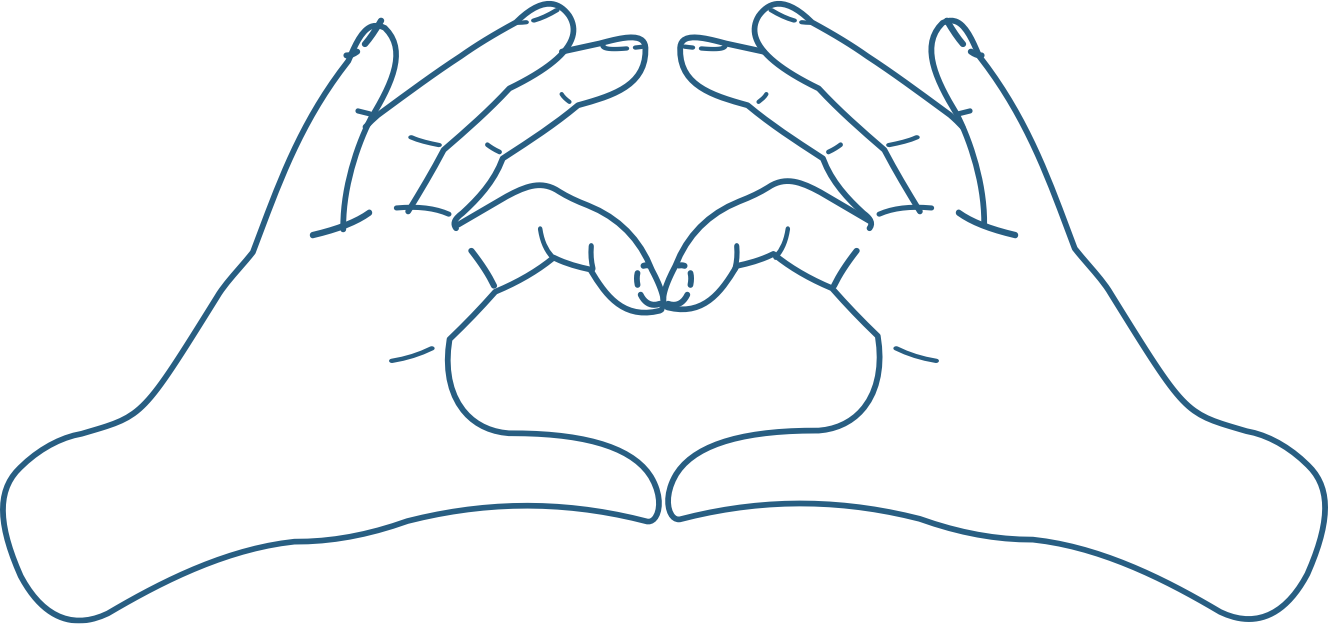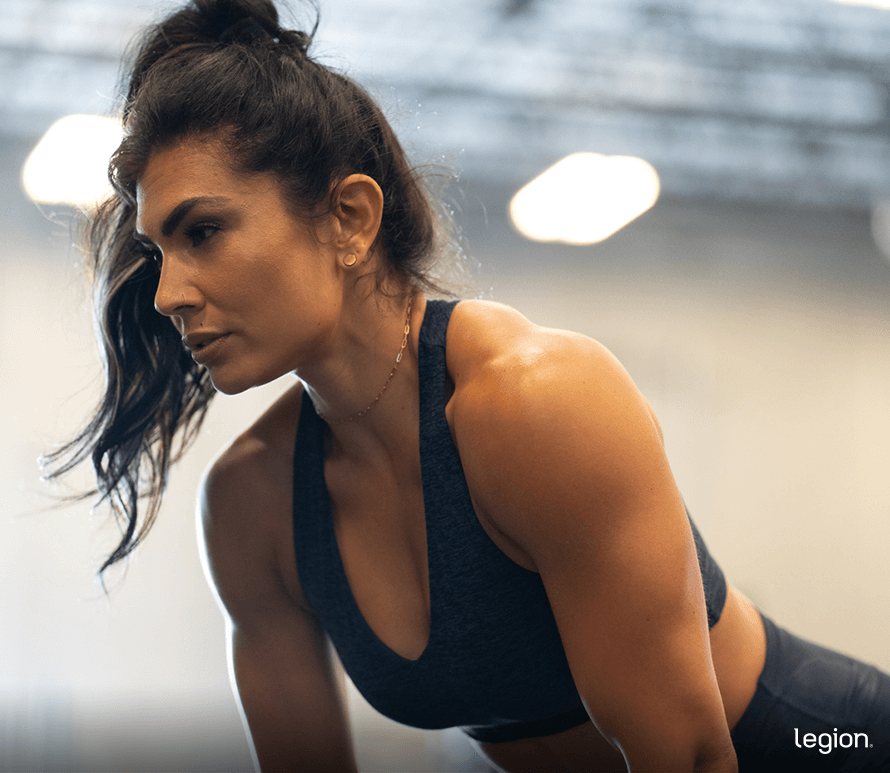
Most guides to “breast-lifting exercises” are built on wishful thinking.
Planks, arm circles, supermans—they’re good for general fitness, but these exercises don’t lift breast tissue or make your chest look perkier.
What can change the appearance of your breasts is strengthening the muscles underneath and around them, improving your posture, and supporting the health of the skin that holds everything in place.
This article shows you the exercises and habits that actually make a visible difference.
Key Takeaways
- You can’t lift breast tissue with exercise—but you can make your breasts look higher, fuller, and more supported by strengthening the muscles underneath and around them.
- The muscles that matter most for perkiness are the pecs, shoulders, and upper back. These determine how your chest looks and how upright you stand.
- Good posture creates one of the biggest visible changes. Rounded shoulders make breasts look lower, whereas upright posture pushes the chest “up and out.”
- The best exercises to lift your breasts include press variations for the pecs and shoulders and rows for the upper back.
- A combination of chest, back, and shoulder training, weight management, good sleep, and proper support (like a well-fitted bra) can create noticeable improvements in perkiness within 3–6 months.
Table of Contents
+
Can Exercise Lift Sagging Breasts?
Yes and no. Exercise can’t directly “lift” your breasts, but it can change the way they look by improving the size and shape of the muscles underneath, your posture, and your overall body composition.
Your breasts are made mostly of glandular tissue, fat, and skin, and they sit on top of your chest muscles (the pectoralis major, or “pecs”):

By training your pecs, you develop the muscles underneath, which can help “fill out” this area and create a more balanced, lifted look.
Strength training also improves posture by developing the shoulder and upper-back muscles that pull your shoulder blades back and help you stand taller. This alone can make your chest look perkier:

That said, it’s important to be realistic about what exercise can’t change.
As you get older, the glandular tissue in your breasts shrinks while the amount of fat increases, reducing firmness and density. At the same time, the skin covering the breasts gradually becomes thinner and less elastic, which contributes to the drooping or sagging most women notice with age.
Unfortunately, strength training can’t reverse these changes—but it can provide another kind of lift.
Research shows regular exercise significantly improves body image and self-esteem, helping you feel more confident and comfortable in your skin—even if your breasts don’t look exactly the way they did when you were younger.
What Muscles Should You Train to Lift Sagging Breasts?
While exercise can’t physically lift breast tissue, strengthening the muscles that support your chest and posture can make your breasts look more lifted. The key areas to train are your pecs, upper back, and shoulders—especially the rear delts. Here’s how these muscles look on your body and why each matters:

Chest
When you build your pecs, you increase the size and definition of the muscle that forms the platform beneath the breast. This can:
- Create more fullness in the upper chest
- Improve the contour and balance of the chest area
That’s why chest training is the foundation of improving how your breasts look through exercise.
Upper Back (Rhomboids and Traps)
The muscles of your upper back—especially the rhomboids and traps—pull your shoulder blades back and support your posture.
This is important because:
- Rounded shoulders make the chest look saggier, flatter, and less perky
- Upright posture pushes the chest “up and out,” creating a more lifted silhouette
- Strong upper-back muscles counteract the forward pull created by breast weight (especially in women with larger breasts), which helps reduce slouching
In other words, a strong upper back supports the position your chest needs to look lifted.
Shoulders (Especially Rear Delts)
The “rear delts”—the sections of your shoulder muscles behind your shoulder joints on your upper back—play a major role in shoulder positioning. When they’re weak, your shoulders tend to roll forward, which collapses your chest and exaggerates sagging.
Strengthening the rear delts helps:
- Pull the shoulders back
- Improve posture, which enhances the overall appearance of your chest
Developing the side and front delts can also make your upper body look more balanced and give the chest a more “framed” appearance.
13 Best Exercises to Lift Your Breasts Naturally

The exercises below help lift your breasts by targeting the muscles that shape, support, and position your chest so it appears fuller, firmer, and more balanced.
1. Push-up
Why: It builds your chest and shoulders—the muscles that help support your breasts—giving them a naturally more lifted look, all without needing any equipment.
How to:
- Start in a high plank with your hands slightly wider than shoulder-width.
- Lower your chest toward the floor by bending your elbows.
- Push back up to return to the starting position.
Alternatives:
- Kneeling push-up
- Wall push-up
- Diamond push-up
READ MORE: How to Do the Push-up: Form, Variations, and Workouts
2. Dumbbell Bench Press
Why: Dumbbells train each side of your chest independently, helping your pecs develop more evenly and look more balanced.
How to:
- Lie on a flat bench holding a dumbbell in each hand resting near your chest.
- Press the dumbbells up until your arms are straight.
- Reverse the movement and return to the starting position.
Alternatives:
- Incline dumbbell bench press
- Barbell bench press
- Push-up
READ MORE: How to Dumbbell Bench Press: Form, Benefits, and Variations
3. Incline Dumbbell Bench Press
Why: It targets the upper pecs, which adds fullness higher on your chest so your breasts look more balanced and less bottom-heavy.
How to:
- Set your bench to a low incline (about 30–45°).
- Hold a dumbbell in each hand and sit back on the bench with the weights resting near your chest.
- Press the dumbbells up until your arms are straight.
- Reverse the movement and return to the starting position.
Alternatives:
- Dumbbell bench press
- Incline barbell bench press
- Push-up
READ MORE: How to Do an Incline Dumbbell Press & Common Alternatives
4. Barbell Bench Press
Why: It’s more stable than dumbbells, so beginners can focus on building chest strength without worrying as much about balance.
How to:
- Lie on a bench and grab the bar with a slightly wider than shoulder-width grip.
- Pull your shoulder blades together and down and create a slight arch in your lower back.
- Unrack the bar and lower it to your mid-chest.
- Press the bar back to the starting position.
Alternatives:
- Incline barbell bench press
- Dumbbell bench press
- Close-grip bench press
READ MORE: The Definitive Guide on How to Bench Press (and the 8 Best Variations!)
5. Incline Barbell Bench Press
Why: It combines the stability of a barbell with the upper-chest emphasis of an incline, helping you build balanced strength and more fullness higher on your chest.
How to:
- Lie on an incline bench and grab the bar with a slightly wider than shoulder-width grip.
- Pull your shoulder blades together and down and create a slight arch in your lower back.
- Unrack the bar and lower it to your upper chest.
- Press the bar back to the starting position.
Alternatives:
- Incline dumbbell bench press
- Close-grip bench press
- Dumbbell bench press
READ MORE: Incline Bench Press: A Definitive Guide to Incline Form & Set Up
6. Machine Chest Press
Why: It’s easy to learn and lets you train your chest safely and effectively, making it easier to develop the muscles that improve your chest shape.
How to:
- Adjust the machine seat so the handles line up with your mid-chest.
- Grip the handles with your palms facing down or toward each other.
- Press the handles forward until your arms are straight.
- Reverse the movement and return to the starting position.
Alternatives:
- Machine incline chest press
- Push-up
- Dumbbell bench press
7. Dumbbell Pullover
Why: It emphasizes the lower pecs—a section of the chest most other exercises don’t train well.
How to:
- Lie on a bench and hold a dumbbell with both hands over your chest.
- Keeping a slight bend in your elbows, lower the dumbbell back over your head.
- Reverse the movement and return to the starting position.
Alternatives:
- Cable pullover
- Dip
- Push-up
READ MORE: How to Do the Dumbbell Pullover for Lats and Chest Size
8. Dumbbell Fly
Why: It isolates your pecs, letting you focus on the muscles that have the biggest impact on making your breasts look more lifted.
How to:
- Lie on a flat bench holding a dumbbell in each hand resting near your chest.
- Press the dumbbells up until your arms are straight.
- Lower them out to your sides in a wide arc.
- Bring them back together over your chest.
Alternatives:
- Cable fly
- Cable crossover
- Push-up
9. Shoulder Press
Why: It strengthens your shoulders, which helps pull your posture upright and makes your breasts look more supported and less droopy.
How to:
- Sit on an upright bench and hold a dumbbell in each hand.
- Bring the dumbbells up in front of your shoulders with your palms facing away.
- Press the dumbbells overhead.
- Reverse the movement and return to the starting position.
Alternatives:
READ MORE: How to Perfect the Seated Dumbbell Shoulder Press
10. Dumbbell Side Lateral Raise
Why: It strengthens and shapes your shoulders, helping create a strong, upright posture that keeps your chest up and out.
How to:
- Stand up straight with a dumbbell in each hand.
- Raise the dumbbells out to your sides until your upper arms are parallel to the floor.
- Reverse the movement and return to the starting position.
Alternatives:
- Cable side lateral raise
- Barbell upright row
- Dumbbell upright row
READ MORE: How to Do the Dumbbell Rear Lateral Raise: Form, Benefits, & Variations
11. One-Arm Dumbbell Row
Why: It builds balanced upper-back strength on each side, which helps prevent the slouched posture that makes your chest look saggy.
How to:
- Hold a dumbbell in your right hand.
- Plant your left knee and arm firmly on a bench, your right foot on the floor a foot or two from the bench, and let your right arm hang straight down toward the floor).
- Keeping your back straight, pull the dumbbell upward until it touches your torso, and then return it to the starting position.
- Once you’ve completed the desired number of reps, repeat the process with your left arm.
Alternatives:
- Barbell row
- Inverted row
- Chest-supported row
READ MORE: How to Do the Bent-Over Dumbbell Row
12. Barbell Row
Why: It builds upper-back strength for better posture and a naturally perkier-looking chest.
How to:
- Stand with your feet shoulder-width apart and a barbell positioned over your mid foot
- Grab the bar with a slightly wider than shoulder-width grip.
- Hinge at the hips until your torso is close to parallel with the floor.
- Pull the bar toward your torso, keeping your elbows close to your sides.
- Lower the bar back to the starting position.
Alternatives:
- One-arm dumbbell row
- Chest-supported row
- Seated cable row
READ MORE: The 12 Best Barbell Row Variations You Can Do
13. Seated Cable Row
Why: The cable’s constant tension works your upper back differently than free weights, helping strengthen the muscles that keep your shoulders from rounding forward and reducing the appearance of sagging.
How to:
- Sit on the machine with your feet on the footrest and your knees slightly bent.
- Grab the handle with a neutral grip and sit tall with your arms extended.
- Pull the handle toward your stomach while keeping your back straight.
- Reverse the movement and return to the starting position.
Alternatives:
- Machine row
- T-bar row
- Meadows row
READ MORE: How to Do the Seated Cable Row: Muscles Worked, Form, and Alternatives
Do Core Exercises Help Lift Sagging Breasts?
Not directly. Your core muscles don’t attach to your pecs, so training them can’t lift the chest area.
That said, a stronger core helps you stand taller and maintain a more upright posture—both of which may help to make your chest look more open, supported, and lifted.
But if you’re already following a well-designed strength training routine, you probably don’t need to add extra core work just for this purpose. Big compound exercises like squats, deadlifts, lunges, overhead presses, and rows already train your core enough to support good posture.
How Often Should You Do Breast-Lifting Exercises?
Doing breast-firming exercises once per week is enough for most women to see excellent results, especially if you’re new to lifting or returning after time off.
That said, if making your boobs look less saggy is your number one goal in the gym, increasing this to two weekly workouts may produce slightly faster results.
Just keep in mind that adding more breast-lifting workouts isn’t free.
The more time and recovery resources you devote to these muscles, the less you have available for training other areas of your body. So, if improving breast appearance is one of your goals—not the only one—one weekly session is probably best.
How to Fit Breast-Lifting Exercises into Your Weekly Routine
All the exercises above fit into upper-body or “push pull” workouts. These workouts train all the major muscle groups of your upper body—your chest, shoulders, back, and arms—which happen to be the muscles that most influence how lifted or supported your breasts look.
Your first step is choosing how often you want to train your upper body (once or twice per week), then plugging in one or both of the sample workouts below into your weekly split:
- If you train your upper body once per week, follow one routine for 8–10 weeks, then switch to the other.
- If you train your upper body twice per week, do both routines each week.
Sample Workout #1
- Dumbbell Bench Press: 3 sets | 8–10 reps | 3–5 min rest
- Shoulder Press: 3 sets | 8–10 reps | 3–5 min rest
- One-Arm Dumbbell Row: 3 sets | 8–10 reps | 2–3 min rest
- Dumbbell Fly: 3 sets | 8–10 reps | 2–3 min rest
Sample Workout #2
- Incline Dumbbell Bench Press: 3 sets | 8–10 reps | 3–5 min rest
- Barbell Row: 3 sets | 8–10 reps | 3–5 min rest
- Dumbbell Side Lateral Raise: 3 sets | 8–10 reps | 2–3 min rest
- Dumbbell Pullover: 3 sets | 8–10 reps | 2–3 min rest
Sample 3-Day Split
- Monday: Lower Body
- Tuesday: Rest
- Wednesday: Upper Body
- Thursday: Rest
- Friday: Lower Body
- Saturday: Rest
- Sunday: Rest
Sample 4-Day Split
- Monday: Upper Body
- Tuesday: Lower Body
- Wednesday: Rest
- Thursday: Upper Body
- Friday: Lower Body
- Saturday: Rest
- Sunday: Rest
How Long Until Your Breasts Look Perkier?
If you train consistently, eat enough protein, and consume the right number of calories to support your goals, you can expect to see noticeable changes within 3–6 months.
And if you’d like proof, here are a few clients from Legion’s body transformation coaching service who noticeably improved the appearance of their chest in just a few months using the same principles you’ve learned in this article:

Other Non-Surgical Ways to Improve Breast Perkiness
Exercise can help your breasts look less saggy, but it’s not the only factor. Your weight, skin health, and lifestyle all influence how lifted your breasts appear. Here are a few simple, non-surgical strategies that can help you get the look you want.
Wear a Supportive Bra
A well-fitted, supportive bra helps take some of the weight off your chest so it doesn’t pull your shoulders forward. This reduces the rounded posture that can make your breasts look droopy.
Research shows that many women unknowingly wear bras that don’t provide enough support, so getting properly fitted can make a noticeable difference in how lifted your chest looks day to day.
Maintain a Healthy Weight
The heavier your breasts, the more they encourage slouching—which makes them appear saggier. Maintaining a healthy body weight helps reduce breast mass and the strain on your posture, which can make your chest look more supported.
Quit Smoking
Smoking causes collagen and elastin—the fibers that keep your skin firm and resilient—to break down. As these decline, the skin all over your body—including on your breasts—becomes looser and more prone to sagging. Quitting supports healthier, firmer-looking skin over time.
Prioritize Sleep
Good sleep supports the health of your skin and helps your body repair the collagen and elastin that keep it firm. Lack of sleep is also linked to weight gain, which can increase breast mass and worsen posture.
Prioritizing sleep won’t “lift” breast tissue, but it helps maintain the skin quality and body weight that influence how perky your breasts appear.
(And for the record: there’s no evidence sleeping in a bra make your breasts perkier or saggier.)
When Should You Consult a Doctor?
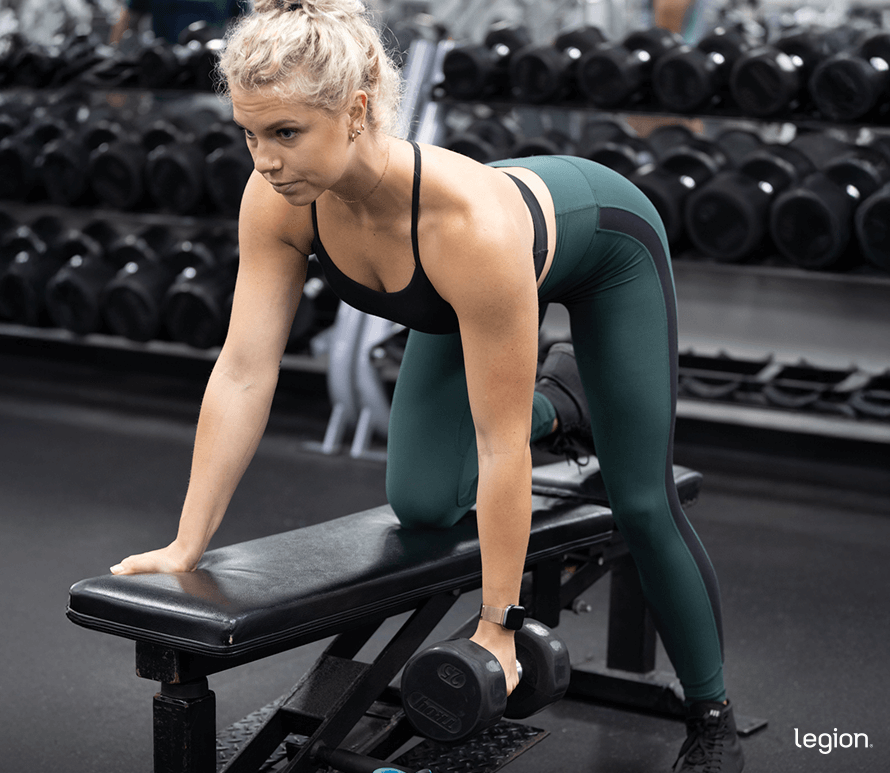
Most people don’t need medical treatment to improve how their breasts look. Strength training, good posture, healthy daily habits, and maintaining a steady body weight often make a noticeable difference over time.
That said, if you’ve trained consistently, eaten well, and made positive lifestyle changes for at least a year and still feel unhappy with how your breasts look—and it’s something that genuinely affects your confidence or quality of life—it may be worth speaking with a qualified medical professional.
A doctor or board-certified plastic surgeon can help you understand what’s realistic, what your options are, and whether surgery makes sense for your goals. The key is that it should be your decision, made after you’ve tried non-surgical approaches and given your body time to respond.
The Bottom Line on Exercises to Lift Breasts
Most “breast-lifting workouts” are based on a misunderstanding of anatomy. Exercises can’t tighten breast tissue—but they can change how your breasts look by strengthening the muscles underneath them and improving your posture.
Build your pecs, shoulders, and upper back, keep your weight in a healthy range, take steps to support skin health, and stand tall.
Do that consistently, and your chest will look naturally fuller, higher, and more supported.
FAQ #1: How can you make your boobs less saggy?
Breasts sag for reasons you can’t fully control—aging, skin elasticity, structural changes, and gravity. But the appearance of perkiness is something you can influence.
Strengthening your pecs, shoulders, and upper back, standing taller, managing your body weight, and keeping your skin healthy all create a visibly higher, fuller, more supported-looking chest.
It’s not a surgical lift, but for most women, it’s a meaningful and confidence-boosting improvement.
FAQ #2: Do breast lift exercises actually work?
They work in an indirect but meaningful way. Exercises won’t lift the breast tissue, but they can make your chest look higher, firmer, and more supported by improving muscle tone, posture, and symmetry.
FAQ #3: Can you tighten sagging breasts in 7 days?
No. Building muscle and adapting your posture take time. But with a few months of consistent training, most women see a noticeable improvement in how lifted their chest appears.
Want More Content Like This?
Check out these articles:
- The Best Women’s Leg Workout for a Strong, Sculpted Lower Body
- The Best Hourglass Body Workout Routine for a Slim Waist & Big Curves
- Transform Your Pear-Shaped Body: Exercises & Diet Tips
- The Ultimate 3-Month Female Body Recomposition Workout Plan
Scientific References +
- Hutson, S W, et al. “Morphometric Studies of Age Related Changes in Normal Human Breast and Their Significance for Evolution of Mammary Cancer.” Journal of Clinical Pathology, vol. 38, no. 3, 1 Mar. 1985, pp. 281–287, https://doi.org/10.1136/jcp.38.3.281. Accessed 29 Sept. 2021.
- Coltman, C. E., et al. “Effect of Aging on Breast Skin Thickness and Elasticity: Implications for Breast Support.” Skin Research and Technology, vol. 23, no. 3, 1 Nov. 2016, pp. 303–311, https://doi.org/10.1111/srt.12335.
- Kraemer, William J., et al. “Evolution of Resistance Training in Women: History and Mechanisms for Health and Performance.” Sports Medicine and Health Science, Feb. 2025, www.sciencedirect.com/science/article/pii/S2666337625000162, https://doi.org/10.1016/j.smhs.2025.01.005.
- Seguin, Rebecca A, et al. “Strength Training Improves Body Image and Physical Activity Behaviors among Midlife and Older Rural Women.” Journal of Extension, vol. 51, no. 4, Aug. 2013, p. 4FEA2, pmc.ncbi.nlm.nih.gov/articles/PMC4354895/.
- Lauver, Jakob D., et al. “Influence of Bench Angle on Upper Extremity Muscular Activation during Bench Press Exercise.” European Journal of Sport Science, vol. 16, no. 3, 23 Mar. 2015, pp. 309–316, https://doi.org/10.1080/17461391.2015.1022605.
- Trebs, Arthur A, et al. “An Electromyography Analysis of 3 Muscles Surrounding the Shoulder Joint during the Performance of a Chest Press Exercise at Several Angles.” Journal of Strength and Conditioning Research, vol. 24, no. 7, July 2010, pp. 1925–1930, insights.ovid.com/strength-conditioning-research/jscr/2010/07/000/electromyography-analysis-muscles-surrounding/31/00124278, https://doi.org/10.1519/jsc.0b013e3181ddfae7.
- HANDA, TOHRU, et al. “COMPARATIVE ELECTROMYOGRAPHICAL INVESTIGATION of the BICEPS BRACHII, LATISSIMUS DORSI, and TRAPEZIUS MUSCLES during FIVE PULL EXERCISES.” Japanese Journal of Physical Fitness and Sports Medicine, vol. 54, no. 2, 2005, pp. 159–168, https://doi.org/10.7600/jspfsm.54.159.
- Coltman, Celeste E., et al. “Effect of Breast Size on Upper Torso Musculoskeletal Structure and Function.” Plastic and Reconstructive Surgery, vol. 143, no. 3, Mar. 2019, pp. 686–695, https://doi.org/10.1097/prs.0000000000005319.
- Greenbaum, A. R., et al. “An Investigation of the Suitability of Bra Fit in Women Referred for Reduction Mammaplasty.” British Journal of Plastic Surgery, vol. 56, no. 3, 1 Apr. 2003, pp. 230–236, www.jprasurg.com/article/S0007-1226(03)00122-X/fulltext, https://doi.org/10.1016/S0007-1226(03)00122-X.
- McGhee, Deirdre E., and Julie R. Steele. “Optimising Breast Support in Female Patients through Correct Bra Fit. A Cross-Sectional Study.” Journal of Science and Medicine in Sport, vol. 13, no. 6, 1 Nov. 2010, pp. 568–572, pubmed.ncbi.nlm.nih.gov/20451452/, https://doi.org/10.1016/j.jsams.2010.03.003.
- Morita, Akimichi. “Tobacco Smoke Causes Premature Skin Aging.” Journal of Dermatological Science, vol. 48, no. 3, 1 Dec. 2007, pp. 169–175, pubmed.ncbi.nlm.nih.gov/17951030/, https://doi.org/10.1016/j.jdermsci.2007.06.015.
- Lipa, Katarzyna, et al. “Does Smoking Affect Your Skin?” ProQuest, vol. 38, no. 3, 2021, pp. 371–376, www.proquest.com/docview/2560293509?accountid=15324&parentSessionId=m8MQK82TWzmuG3ZvtdP%2BEW1fEMKNrBoW2Z2vvi9Mp%2FE%3D&pq-origsite=primo, https://doi.org/10.5114/ada.2021.103000.
- P, Oyetakin-White, et al. “Does Poor Sleep Quality Affect Skin Ageing?” Clinical and Experimental Dermatology, 1 Jan. 2015, pubmed.ncbi.nlm.nih.gov/25266053/.
- Cappuccio, Francesco P, et al. “Meta-Analysis of Short Sleep Duration and Obesity in Children and Adults.” Sleep, vol. 31, no. 5, 2008, pp. 619–26, www.ncbi.nlm.nih.gov/pmc/articles/PMC2398753/, https://doi.org/10.1093/sleep/31.5.619. Accessed 9 July 2019.

